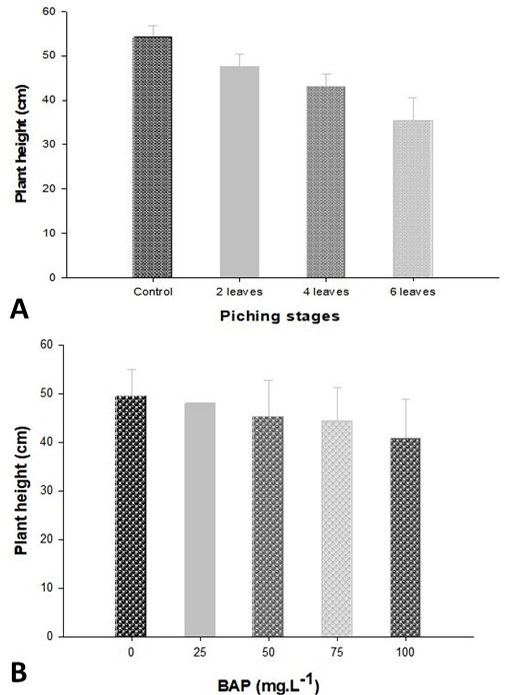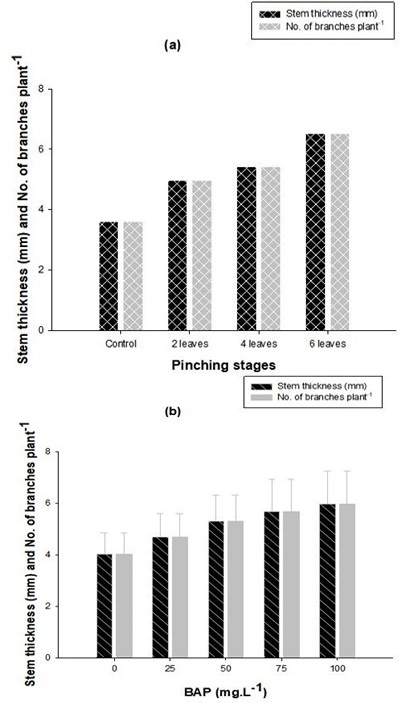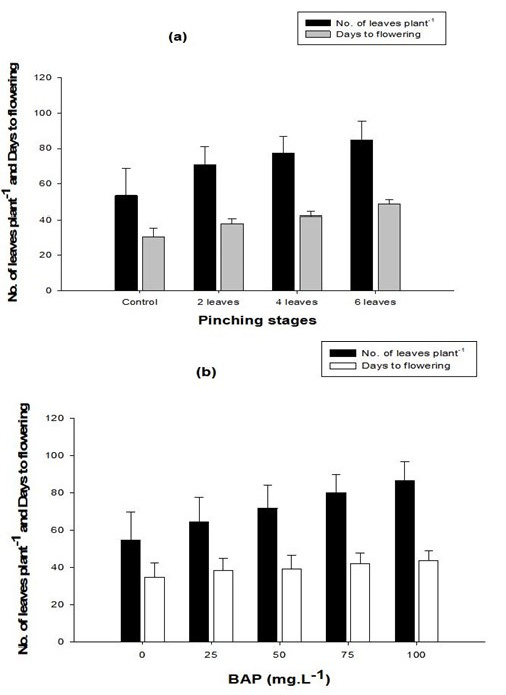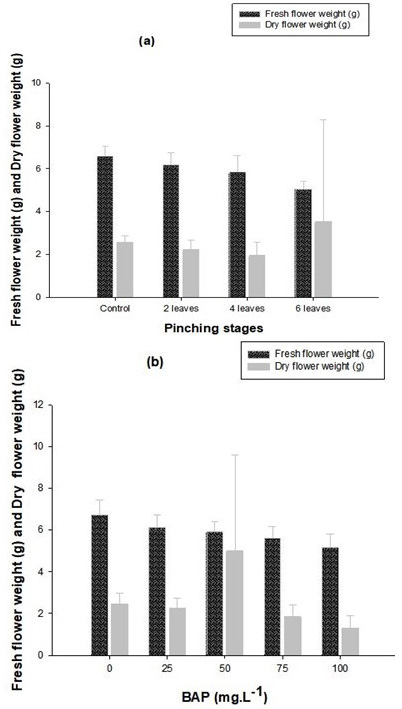Managing the Growth and Flower Production of Zinnia (Zinnia elegans) through Benzyle Amino Purine (BAP) Application and Pinching
Sajid Ali1, Abdul Basit1,3*, Abdul Mateen Khattak1, Syed Tanveer Shah1, Izhar Ullah2, Noor Alam Khan3, Imran Ahmad1, Kamran Rauf1, Salman Khan1, Irfan Ullah1 and Intizar Ahmad1
Zinnia Plant height as affected by (a) pinching stages (b) BAP concentration.
Stem thickness and No. of branches plant of zinna as affected by (a) Pinching stages and (b) BAP concentrations.
No. of leaves plant-1 and Days to flowering of zinnia as affected by (a) Pinching stages and (b) BAP concentrations.
No. of flowers plant-1, flower diameter and flower persistency of zinnia as affected by (a) Pinching stages and (b) BAP concentration.
Fresh flower weight (g) and dry flower weight of zinnia as affected by (a) Pinching stages and (b) BAP concentrations.
**: LSD≤0.01; ns: Non-significant; PH: Plant height; ST: Stem thickness, NOBPP: Number of branches plant-1; NOLP: Number of leaves plant-1; DTF: Days to flowering; NOFPP: Number of flowers plant-1; FD: Flower diameter; NOFP: Number of flowers plant-1; FFW: Flower fresh weight; FDW: Flower dry weight.












